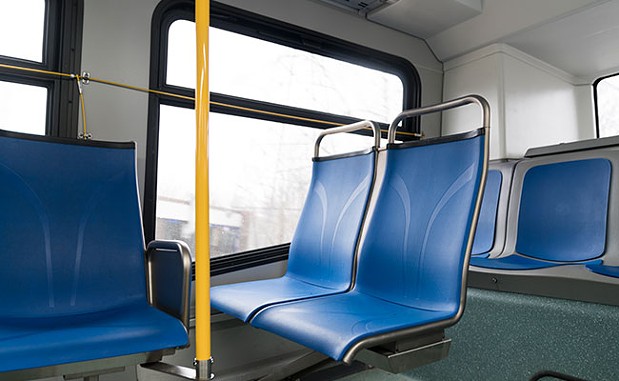When I see those blue plastic bus seats, I know I’m in for a stressful ride.
Ever since Halifax Transit introduced them last year, they’ve added yet another awkward complication I’m forced to confront en route to my destination. The seats are extremely slippery and difficult to stay on, and I’ve fallen off them more than once. To prevent this, I’ve had to strain muscles clinging to the poles, and I’ve seen able-bodied individuals experience discomfort as well.

Nick Ritcey,
“The switch from fabric to plastic was initially an effort to reduce maintenance time and costs, as they are more durable and easier to clean,” he says. “Since making the switch, many customers have told us that they prefer the comfort of fabric seats.”
Halifax Transit has listened to those concerns, Ritcey
While this positive step is encouraging, it’s currently limited only to new seat orders. There are no options available to feel more secure on the remaining plastic seats. Those of us who rely on accessible transportation will have to remain cautiously optimistic when planning our daily routes.
Ritcey says the municipality is also looking at replacing some of the side-facing seats on current
These efforts are certainly appreciated, though
Ritcey says passengers with disabilities are welcome to request help from the driver. “If possible, the driver will find the most suitable seating option for that passenger to help ensure comfort,” he explains.
My experiences, however, have taught me that accessibility isn’t always a guarantee. It all depends on the patience of the driver and their understanding of a particular disability. There isn’t always time to explain why something is a barrier. I have tried moving to a seat a few rows back, where a fall is less likely because there is another seat directly in front of you.
Most days, though, the bus is too full, and since the driver usually pulls away as soon as passengers board, it’s much easier to grab a seat in front.
Each one of us, especially those who must take more creative approaches to plan our schedules, deserve transportation that ensures comfortably arriving from point A to point B. Saving time and money are important these days, but they’re factors which shouldn’t cause unnecessary unease or come at the expense of inclusivity.




















